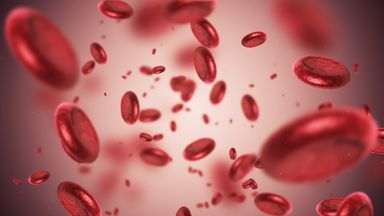How often do you clean your microwave? Chances are, it's probably not enough.
It's easy to assume that the powerful radiation in a microwave oven is enough to kill any lurking bacteria, but according to new research this is absolutely not the case.
In a study published in the journal Frontiers in Microbiology, scientists at the biotech startup Darwin Bioprospecting Excellence and the University of Valencia in Spain sampled microbes from inside 30 different microwaves to explore which, if any, bacterial colonies were able to grow in their extreme interiors.
"We hypothesize that microwaves actually select from the pool of bacteria present in the air and surfaces those able to resist radiation," microbiologist Manuel Porcar, CEO of Darwin Bioprospecting Excellence, told Newsweek.
In total, the researchers found 747 different groups of bacteria, the most frequent of which were Firmicutes, Actinobacteria and Proteobacteria.
The researchers also compared the microbial colonies found in domestic microwaves to those in their laboratory and found that, while the lab microwaves mostly harbored harmless bacteria, those found in domestic microwaves may pose more of a risk to human health.
"Bacteria in domestic microwaves can be pathogenic, although no more than those found on other places in the kitchen," Porcar said.
According to U.S. census data, microwave ovens can be found in 90 percent of U.S. households and most sources recommend cleaning them once a week. However, according to YouGov surveys, one in three Americans do not hit this target.
"We should clean the microwave as much as any other surface in the kitchen, because our work demonstrates that microwaves do not remove microbial contamination at all, which was somewhat unexpected," Porcar said.
In a statement, co-author Daniel Torrent added: "For both the general public and laboratory personnel, we recommend regularly disinfecting microwaves with a diluted bleach solution or a commercially available disinfectant spray.
"In addition, it is important to wipe down the interior surfaces with a damp cloth after each use to remove any residue and to clean up spills immediately to prevent the growth of bacteria."
Aside from the hygiene implications of these findings, the researchers hope that their discovery might lead to new biotechnological applications where particularly hardy strains of bacteria are required to support industrial processes.
"To find microbial biodiversity you don't need to travel to exotic locations, you need to find exotic microbial niches, that can be very close from us," Porcar said.
Is there a health issue that's worrying you? Let us know via health@newsweek.com. We can ask experts for advice, and your story could be featured on Newsweek.
References
Torrent et al., (2024), The microwave bacteriome: biodiversity of domestic and laboratory microwave ovens, Frontiers in Microbiology http://dx.doi.org/10.3389/fmicb.2024.1395751
Disclaimer: The copyright of this article belongs to the original author. Reposting this article is solely for the purpose of information dissemination and does not constitute any investment advice. If there is any infringement, please contact us immediately. We will make corrections or deletions as necessary. Thank you.



